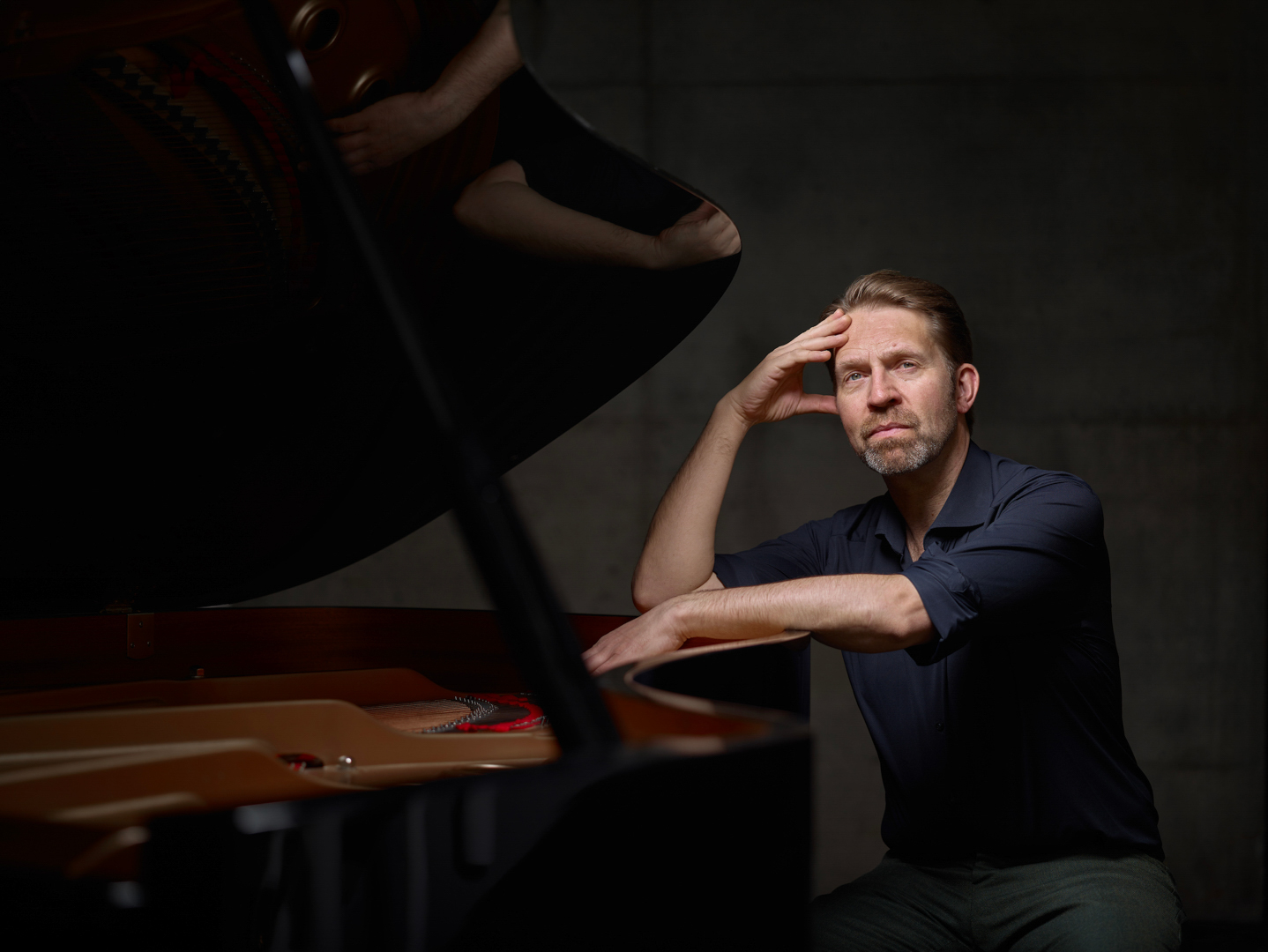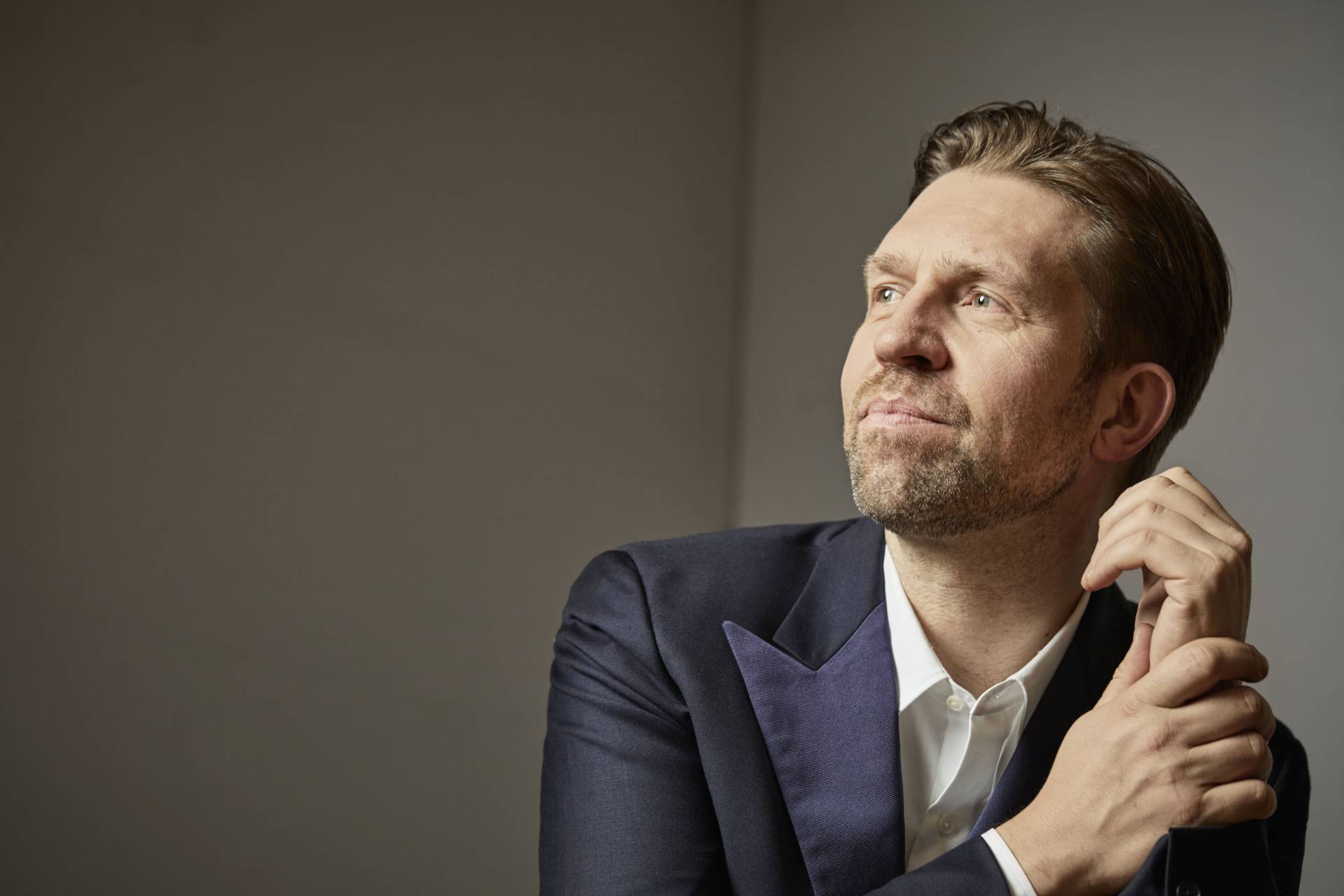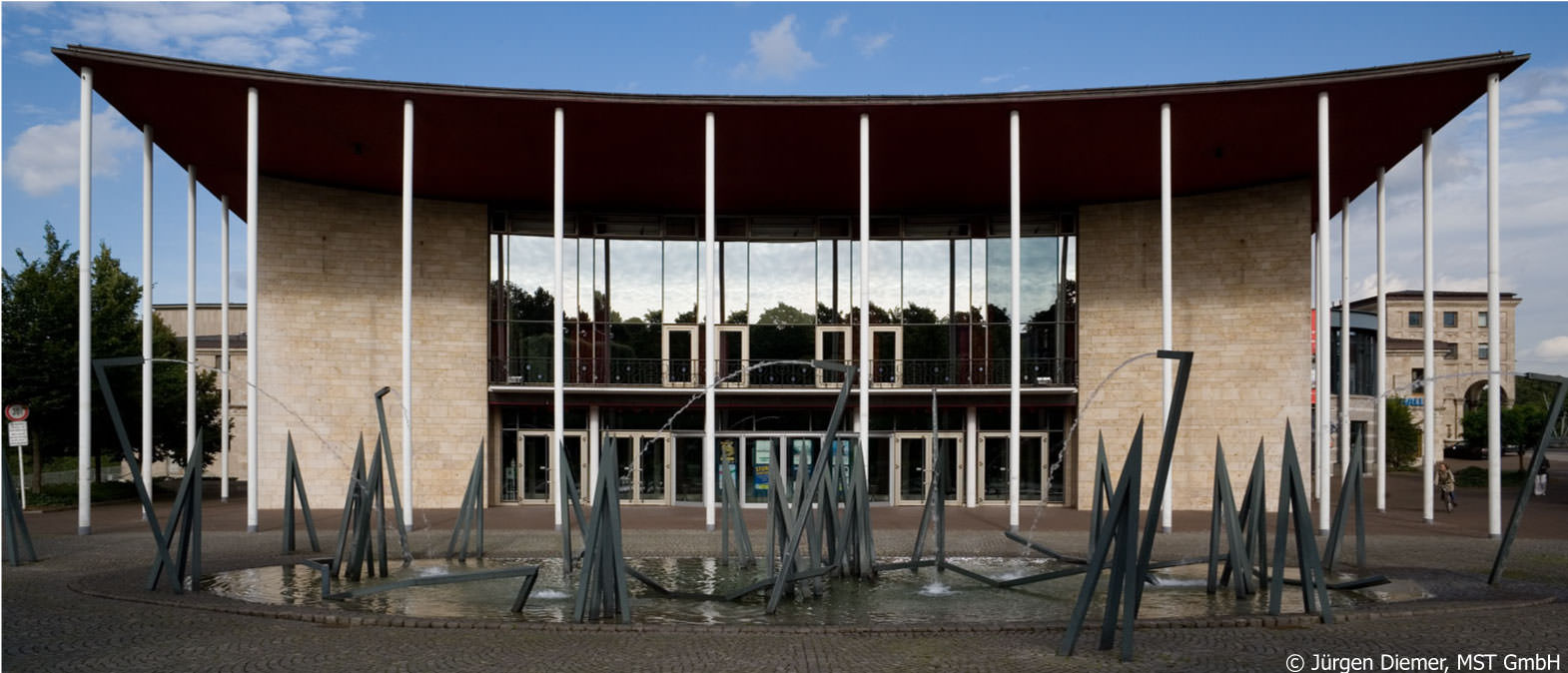Leif Ove Andsnes
Gnossiennes

Edvard Grieg: Sonata in E minor, Op. 7
Geirr Tveitt: Piano Sonata No. 29 “Sonata Etere,” Op. 129
Frédéric Chopin: 24 Préludes, Op. 28
Claude Debussy: Préludes, Buch 1, CD 125: X. “La cathédrale engloutie”
Sergei Rachmaninow: Études-Tableaux, Op. 33 Nr. 2
What does he appreciate most about his life as an artist? The answer comes promptly: “Sharing the music. With colleagues and the audience. With everyone.”
Andsnes comes from Karmøy, an island off Norway’s southwest coast, where the Atlantic Ocean is a constant companion—sometimes gentle, sometimes passionate. Living with elemental forces and shifting moods is something one learns naturally there. The son of two music teachers, Leif Ove began piano lessons at an early age and later studied at the Bergen Conservatory with Jirí Hlinka. “He often gave me pieces by Smetana because his music helps develop technique.” Yet, at the beginning of his career, Andsnes “was less interested in the smaller, easier works of the repertoire. What mattered then was the grand material.”
Even in his most virtuosic moments, his music feels like a logical structure—so clear in its architecture that it opens up space for details and nuances. But over time, Andsnes has realized that he is drawn not only to the great masterworks but also to the lesser-known. This includes, again and again, the music of his homeland—first and foremost, Edvard Grieg. Early on, everyone wanted to hear the Norwegian pianist perform Grieg’s Piano Concerto or Lyric Pieces. But Andsnes prefers to dig deeper, focusing not only on the familiar. He is equally passionate about chamber music and song repertoire, even with Grieg. “He is the crucial starting point for almost all later Norwegian composers,” including David Monrad Johansen, Fartein Valen, Harald Sæverud, and Geirr Tveitt.
Tveitt, originally from Bergen, absorbed influences from across Europe—studying in Leipzig, Vienna, and Paris—yet remained deeply connected to the music of his homeland. He collected around 1,000 folk songs. “Tveitt’s great tragedy was that his country house burned down in a fire,” Andsnes recounts. “He lost almost everything, including most of his compositions.” About 300 unpublished works were destroyed—”around 80% of his output,” including six piano concertos. Some of the works Tveitt considered his best had fortunately been sent to publishers beforehand—”including Sonata No. 29, the ‘Sonata Etere.’ It is his only surviving sonata.” But Geirr Tveitt never truly recovered from the shock of losing so much of his life’s work.
Experiencing Andsnes in concert means witnessing a pianist who channels his energy inward with refined restraint. Even in the most technically demanding passages, his playing remains structured and transparent, revealing the subtle details within the music. Perhaps this mastery of phrasing comes from his extensive work with singers, including Ian Bostridge, Matthias Goerne, and Lise Davidsen: “What you can always learn from them is how to shape phrases, how to breathe them. Sometimes, when it’s unclear whether to emphasize a note here or to use a diminuendo there, a singer—more than any instrumentalist—can be incredibly insightful.” His work as a song accompanist has also deepened his own approach to storytelling through music.
Today, Andsnes is one of the quiet stars of the international piano scene—though he would likely frown at that term.
Photo: Helge Hansen
How to get there by car
Venue address
Stadthalle Mülheim
Theodor-Heuss-Platz 1
45479 Mülheim an der RuhrMore
Informations

Leif Ove Andsnes
The New York Times calls Leif Ove Andsnes “a pianist of magisterial elegance, power, and insight,” and the Wall Street Journal names him “one of the most gifted musicians of his generation.” With his commanding technique and searching interpretations, the celebrated Norwegian pianist has won acclaim worldwide, playing concertos and recitals in the world’s leading concert halls and with its foremost orchestras, while building an esteemed and extensive discography.

Stadthalle
Die Stadthalle Mülheim, direkt am Westufer der Ruhr gelegen, zählt zu den bedeutendsten Sehenswürdigkeiten der Stadt. Seit 1926 dient das Bauwerk im neo-klassizistischen Stil als zentraler Theater-...










